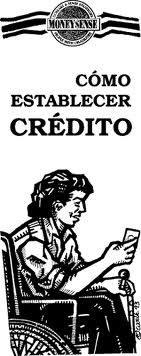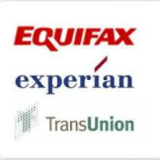More Credit - Mas Credit
Annual Percentage Rate (APR) is the cost of credit. If you carry an unpaid balance, the APR is your best indicator of account costs. The higher you are APR, the more you will pay in interest charges. An APR of 18% on purchases does not mean you are paying 18% every month; it is what you would pay over the course of a year. With an 18% APR, each month you would be charged 1.5% as an interest charge on the open balance.
Variable rates are when your APR is tied to a specific index such as the Prime Rate. It causes your APR to move up and down over time. A variable rate credit card will often have an interest rate like "Prime + 5.9%.” This means that the interest on the card is the Prime Rate, plus an additional 5.9%.
Your rate can also change due to your Card Agreement terms or upon written notice from the company.
You can avoid interest charges on purchases and late fees by paying your balance on time and in full each month. Sometimes you may want or need to make a big purchase that you can't pay off all at once, though, that's one of the main reasons to have a credit card–it lets you carry a balance.
Make sure to factor the payments into your budget when you are planning a large purchase. That way you can plan how long it will take to pay off the purchase. Do not forget to calculate interest charges. They become part of the purchase cost.
Interest charges can be calculated in different ways. Your account statement describes the method that applies to you. In general, interest charges are based on one of the methods below.
Average daily balance:
Many credit card companies use this method. The credit card company totals your balance each day during the billing cycle, adds these balances together, and divides by the number of days in the period.
Adjusted balance:
The credit card company subtracts payments you make during the billing cycle from your balance at the beginning of that period. This means your balance is kept lower and you pay less in interest charges.
Previous balance:
This method applies the monthly interest charge to your beginning balance for the billing cycle. Purchases and payments during the month are not included.
Ending balance:
The credit card company may use your ending balance for the billing cycle. If so, any purchases and payments during the billing cycle are included.
Grace Period
A grace period is NOT an extension of your payment due date. If you are not carrying a balance, it is the period you have to pay new balances before interest charges apply.
If your payment is received past the due date, it may be considered late. It is better to mail your payment early so it gets in before the due date. Better yet, you can often arrange to have payments made electronically from your checking account on a set day each month. It is a great way to be sure your bill is paid on time
can often arrange to have payments made electronically from your checking account on a set day each month. It is a great way to be sure your bill is paid on time
If you do not pay your balance off every month, develop a regular payment pattern. Information about how you pay your bill is regularly sent to the credit bureaus.
If you do not send in at least the minimum payment due each month, a negative mark could appear on your credit report, even if you pay the balance in full the next month. The first thing companies look for when they see your credit report is whether you pay your bills on time.
Cash Advances
Cash advances are convenient, but they are also expensive. If not used wisely, cash advances can cost you more than you can comfortably manage. Before you take a cash advance, know what you are getting into.
A cash advance is not a regular credit charge–it is a short-term loan that you must pay back as soon as possible. You may be required to pay a one-time transaction fee (sometimes as much as 5% of the advance) in addition to interest charges that start to accrue immediately.
The APR for cash advances is often higher than for purchases. That is why you should not use a cash advance to pay ordinary living expenses, buy now rather than waiting, make a down payment, or cover other credit card bills.
Part of the overall credit limit for your credit card account includes a separate cash advance limit. These amounts are shown on your monthly statement. At any given time, the total of your cash advances and any interest on them cannot exceed this or your overall credit limit.
How to get cash advances:
- At a bank:
You can use your card to charge a cash advance at virtually any bank, including those in many foreign countries.
- Through an ATM:
You can use your card and Personal Identification Number (PIN) to request a cash advance at an Automated Teller Machine (ATM) throughout the U.S. and abroad.
- With a check:
Many credit card issuers provide special "convenience" checks so their customers can use them when paying with their card is not an option.
Divorce and Credit
When a marriage falls apart, former partners must divide their financial lives–often at a time when communication is most difficult. You and your partner must reach an agreement about the investments and debts you took on as a couple. You must prepare to stand on your own as a credit customer.
A divorce decree does not affect your agreements with creditors. You could be liable for marital debts even if a court-approved decree orders your former spouse to pay them. It depends on whether you had individual or joint credit. Individual credit is based on your assets, income and credit history. You alone are responsible for paying an individual account, even if you are married.
In "community property" states, however, the assets and debts of one spouse belong to both spouses. Your lawyer will be able to tell you if this applies to you.
Joint credit is based on the assets, income and credit history of both people who apply. Your combined resources may help you get a higher line of credit. However, it also means that you both are responsible for paying off the debt. If one person fails to pay a joint account, the creditor can require payment from the other even if you are separated or divorced.

Money-saving Ideas
You think you save money. You use coupons. You buy in bulk, but are you really saving money?
If you get items because they are on sale, you are not saving. It is not a bargain if you do not need it.
Reconsider luxuries. They have a tendency of becoming necessities. If you live a little below your means, your money will go farther.
New cars lose as much as one third of their value in the first year. If you must buy a car, you could save thousands buying a used one from a reputable dealer.
Check bills for errors.
Do things for yourself that you used to pay for (ironing your own shirts or mowing your lawn, for example).
Make shopping lists and stick to them.
If rates are low and you own a home, you may want to consider refinancing your mortgage. Explore a reverse mortgage for your retirement years.
Compare prices at three stores before making a major purchase. Buy used items when practical.
Treat everything you own as valuable. Make things last. Do not throw things out until they wear out.
Living on a Fixed Income
Living on a fixed income can be difficult. While it is not easy, retirees, disabled people and others living on a fixed income can benefit from good budgeting practices. By tracking your money and cutting unneeded expenses, you can stretch your income.
- List all your expenses for one month.
At the end of the month, carefully review your list and ask yourself questions like, "What did I buy that I don't need? What could I have spent less on? Does my income more than cover all these expenses?"
- Are your expenses covered?
Once you know how you spend, make certain your income covers expenses. Then, cut those expenses until you are actually saving money. You never know when an emergency expense might arise.
- Think of your future.
To have money for future emergency expenses, start saving now. Start small, if you must. Then gradually increase the amount you put away.
- What about inflation?
When you are on a fixed income, a big worry is inflation. Inflation reduces the value of each dollar. You can beat inflation by having your savings grow faster than inflation. That could mean putting your money in stable or growth-oriented investments. Always seek the advice of a good financial planner.
- Is your income really fixed?
Sometimes there are ways to increase income. Can you work part-time? Could you hold a yard sale? Do you have collectibles you could sell (antiques, stamps, artwork, etc.)? Are there government benefits you qualify for but have not taken advantage of? Think of ways to earn extra money.
Your Credit Score

A credit score provides a “snapshot” of your credit risk at a particular point in time. Lenders, insurers, property owners, employers, and utility companies use your credit score to determine if you qualify for a loan, and at what interest rate and credit limit. It is weighed even more heavily when you apply for unsecured credit, or credit lines and credit cards that do not require collateral.
Creditors collect information about you and your credit experience from your credit application and credit report. This information may include:
- Bill-paying history
- The number and types of accounts you have
- Late payments
- Collection actions
- If you have applied for new credit recently
- Outstanding debt
- How long you've had existing accounts
Using a statistical program, creditors compare your information to the credit performance of consumers with similar profiles.
Each creditor may use its own credit-scoring model or varying scoring models for different types of credit. Creditors may also use a generic scoring model developed by a credit scoring company. A credit scoring system awards points for each factor that helps predict who is most likely to repay a debt. The total number of points is what is known as a credit score. It helps predict how creditworthy you are, or how likely it is that you will repay a loan and make timely payments.
How FICO Scores Work
Although lenders and credit agencies have their own proprietary scoring systems, the most common scoring model is the Fair Isaac Company (FICO) model.
You have three FICO scores, one for each of the 3 credit bureaus:
- Equifax
- Experian
- TransUnion
Each FICO score is based on information the credit bureau keeps on file about you. As this information changes, so do your credit scores.
FICO scores range from 300 to 850. A lender will offer you a better interest rate the higher your FICO score. Having poor FICO, scores can lead to higher interest rates.
Negative Rating
Many factors can contribute to someone getting a "bad credit" score from the credit reporting agencies. These include:
v Non-payment
v Late payments
v Skipping payments
v Exceeding card limits
v Declaring bankruptcy
Generally, negative information remains on your credit report for about 7 years, while bankruptcy filings typically stay for about 10. A negative rating can make it more difficult to get loans or credit, and often mean you will pay more interest because lenders consider you a high risk. However, taking steps to improve your score can help you qualify for better rates from lenders.
 |
 |
 |
 UP-ARRIBA |
|




 SIGUIENTE
SIGUIENTE